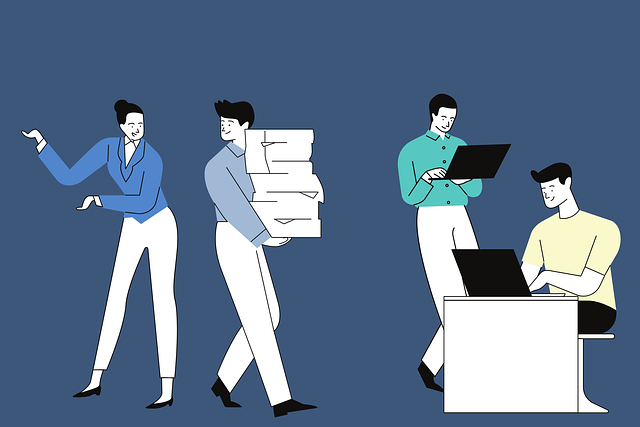You’ve tried the gift cards. The occasional pizza party. The “Employee of the Month” parking spot. Yet turnover remains high, and productivity isn’t where you need it to be, negatively affecting employee morale, despite the lack of employee recognition. As a business owner, you’re caught in a frustrating cycle – spending money on monetary incentives and employee incentive programs that seem to disappear into thin air without measurable returns on employee performance, even when it’s clear that effective employee incentive programs work. Addressing employee turnover is crucial for sustaining a motivated workforce and improving overall business performance. According to insights from a detailed guide on how to keep talent, implementing strategies that focus on recognition, growth opportunities, and personalized incentives can significantly reduce turnover rates and enhance employee satisfaction. Businesses that proactively tackle employee retention challenges are better positioned to build engaged and productive teams. For more in-depth strategies, check out this comprehensive resource on reducing high turnover rates.
Employee turnover can drain resources and morale, but understanding the underlying causes is the first step to effective retention. Many companies overlook the importance of personalized recognition and growth opportunities in curbing turnover. For actionable insights and proven tactics, explore our detailed post on ways to reduce high turnover. This resource delves into tailored strategies that not only retain your best employees but also foster a thriving and motivated workforce.
What if I told you that 79% of employees quit their jobs, citing “lack of appreciation” as a key reason, which affects how employees feel valued, and reveals the importance of understanding employee preferences? Or that companies with effective employee incentive programs report 31% lower turnover rates, which can boost employee morale and employee engagement. , which ultimately helps to increase productivity?
The truth about employee incentives isn’t complex, but it is counterintuitive. The most expensive rewards often yield the weakest results, while thoughtfully designed, nonmonetary incentives and personalized incentives can enhance employee engagement, transforming your workplace culture and bottom line.
The disconnect happens when business owners focus solely on what they think employees want rather than creating systems aligned with both individual motivations and company objectives, which helps ensure that you treat employees well, fostering a positive work culture, and contributing to their overall job satisfaction.
This guide walks you through proven employee incentive program ideas that deliver measurable results. You’ll learn how to design personalized rewards that resonate, create team challenges that build collaboration, and effectively engage employees through meaningful incentives and professional development programs, and implement performance-based systems that directly impact your business goals.
No corporate jargon. No one-size-fits-all solutions. Just practical, tested approaches such as team outings that real business owners have used to transform their teams and attract top talent.
Ready to stop wasting resources on incentives that fall flat and instead focus on how to incentivize employees effectively. And you can start implementing programs that drive results?
Boost customer satisfaction with just a few clicks
Most-Loved Features:
- On-demand drivers
- Real-time GPS tracking
- Delivery confirmation photos
- Over 50% of customers report a smoother delivery experience
Step 1: Implement Effective Employee Motivation Strategies
Motivation strategies drive real business results through clear goals, personalized rewards, and meaningful recognition.
Effective employee incentives boost engagement by 20% and can reduce turnover by up to 31%
Creating the right mix of financial and non-financial employee incentives maximizes ROI on your employee investment.
Set Clear Goals and Expectations with Effective Employee Incentive Programs
The foundation of any effective motivation system is clarity. Without it, even the best employee incentives fail. When employees understand what’s expected and how it connects to bigger company goals, they become invested in outcomes, contributing to a positive work environment.
You can start by defining SMART goals (Specific, Measurable, Achievable, Relevant, Time-bound) for every team member. Research shows employees with clear goals are 2.8 times more likely to be highly engaged. This process works best when it’s collaborative rather than top-down, ensuring that you can effectively reward employees. In addition to motivating your current team, recruiting the right talent is essential for building a productive workforce. Small businesses often face unique hiring challenges, but adopting strategic hiring practices can make a significant difference. If you’re looking to enhance your recruitment process and attract the best-fit candidates, exploring expert advice on hiring can provide valuable insights. For practical tips and strategies, check out this detailed guide on hiring employees for small business.
The clarity process requires three key steps:
Connect individual goals to company objectives
Show each person how their work impacts larger outcomes
Make the connection explicit in performance conversations
Revisit these connections during regular check-ins
Document expectations in writing
Create shared documentation that everyone can reference
Include specific metrics that define success
Set reasonable timelines for each goal
Establish regular progress check-ins
Schedule weekly or bi-weekly short meetings
Use these sessions to clear obstacles
Adjust goals as needed based on changing priorities
Offer Personalized Employee Incentive Plans
One-size-fits-all rewards programs consistently underperform compared to personalized approaches. People have different motivations, and what excites one employee might leave another cold.
You can start by surveying your team about their preferences. It is better to create a simple questionnaire asking about preferred recognition types, reward formats, and personal interests. This baseline data helps you craft an employee incentive program that resonates with individual needs, ultimately boosting job satisfaction.
The personalization process involves these components:
Create a reward menu
Offer various options employees can choose from
Include both monetary and non-monetary rewards
Make sure options appeal to different personality types
Match incentives to career stages
New employees might value mentorship opportunities
Mid-career professionals often appreciate skill development
Senior staff may prefer schedule flexibility or decision authority
Consider generational preferences
Younger workers often value experiences over objects
Mid-career employees might prioritize work-life balance
Senior staff may appreciate retirement planning benefits
Introduce Employee Recognition Programs
Recognition remains among the most powerful yet underutilized motivation tools. Unlike compensation, cash rewards and employee recognition cost little but deliver enormous impact. Regular acknowledgment of contributions, along with wellness programs, satisfies fundamental human needs for appreciation and belonging.
Effective employee recognition programs share several key characteristics:
Timely delivery
Recognize achievements immediately, not months later.
Make recognition part of regular team meetings
Create channels for instant digital recognition
Specific praise
Mention exactly what the person did well
Explain why their action mattered
Connect their work to the larger company values
Public visibility
Share accomplishments with the broader team
Document recognition in permanent ways
Create opportunities for company-wide visibility
Utilize Financial Employee Incentives Strategically
While non-financial incentives are powerful, employee incentive plans that include monetary employee incentives remain important motivation tools when used correctly. The key is designing financial incentives that reinforce desired behaviors without creating unintended consequences.
Effective financial employee incentive systems share these characteristics:
Transparency in the criteria
Everyone understands exactly how rewards are earned
Formulas and calculations are available to all participants
Regular updates show progress toward targets
Achievable thresholds
Set challenging but realistic performance targets
Create multiple tiers so partial achievement earns partial rewards
Adjust targets when external factors significantly change conditions
Team and individual components
Balance employee rewards for personal performance with team success
Prevent siloed thinking by including collaborative metrics
Weight components are based on how much control individuals have
Create Growth Opportunities To Reward Employees
Career advancement possibilities rank consistently among the top motivators for employees across industries. People want to know that their current role leads to meaningful employee benefits.
Effective growth-oriented motivation strategies include:
Clear advancement paths
Document potential career trajectories
Specify skills needed for each level
Provide examples of others who’ve advanced
Skill development resources
Offer training budgets and give employees control
Create internal mentorship programs
Provide time during work hours for learning
Stretch assignments
Identify projects slightly beyond current capabilities.
Pair these challenges with appropriate support
Celebrate growth through the process, not just outcomes
Step 2: Develop Innovative Employee Incentive Programs for Teams
Team incentives boost collaboration and performance without large budgets
Non-monetary rewards often have a greater long-term impact than cash bonuses
Effective team programs combine challenges, learning, and social activities
Create Team-based Challenges For Team Members and Employees Feel Valued
Team challenges push employees to work together toward common goals. These activities break down walls between departments and create a sense of shared purpose.
You can start with short-term challenges that last 1-2 weeks. This maintains interest and gives quick wins. For example, set a company-wide goal to improve customer satisfaction ratings by 5% in the next two weeks. Divide employees into cross-departmental teams where each person brings different skills to the table.
Track progress publicly on a digital dashboard or physical board in a common area. This creates healthy competition and keeps everyone focused on the goal. You should make sure the tracking method is easy to understand at a glance.
Offer Learning Opportunities For Non-Monetary Employee Incentives
Professional development is one of the most valued non-monetary rewards. When employees gain career development opportunities, as well as professional development opportunities and better work-life balance, both they and your company benefit.
You can start by surveying your team to understand what skills they want to develop. This ensures the learning opportunities you offer will be seen as true rewards rather than extra work.
Providing Access to Courses and Workshops For Social Recognition
There are several ways to make learning part of your employee incentive program, including options like tuition reimbursement.
Create a learning library with subscriptions to online platforms like LinkedIn Learning, Coursera, or Udemy for Business.
Establish a stipend system where teams can choose workshops or conferences to attend
Bring in industry experts for exclusive team training sessions
Set up internal “skill share” programs where employees teach each other
The key is giving teams control over what they learn. Let the winning team of a challenge choose a workshop for everyone to attend, or give them first access to limited learning resources.
You can track the skills developed through these programs and connect them to career growth within your company. This transforms a short-term reward into long-term development.
Host Team-building Events
Team-building events strengthen relationships between employees and boost overall engagement. When structured correctly, these events can be powerful rewards that teams actively work to earn.
The most effective team-building events combine fun with purpose. They should be enjoyable while reinforcing company values and team dynamics.
Activities That Enhance Bonding
Consider these options for team-building rewards:
Cooking classes where teams prepare a meal together
Escape rooms that require collaboration to solve puzzles
Volunteer days where teams support a cause they choose
Outdoor adventures like ropes courses or hiking
Creative workshops like painting or pottery classes
The best activities push people slightly outside their comfort zones while providing a shared experience. For example, a cooking class requires communication, time management, and creativity—skills that transfer back to the workplace.
You can match the activity to your team’s preferences. Some groups might prefer physical challenges, while others would value creative or intellectual activities. When possible, offer choices rather than one-size-fits-all events.
Ensuring Voluntary Participation
For team-building events to work as rewards, they must be genuinely desired. Follow these guidelines:
Survey teams about their interests before planning events
Schedule events during normal work hours when possible
Provide alternatives for those who cannot participate
Focus on inclusion rather than competition
Get feedback after each event to improve future offerings
Implement Recognition-Based Employee Incentives
Recognition is a powerful motivator that costs little but yields significant results. Creating formal recognition programs gives teams something to work toward.
You can start with a simple system where teams can nominate each other for outstanding work. This peer recognition often carries more weight than top-down praise.
Public Recognition Strategies
Effective team recognition includes:
Dedicate time in company meetings to highlight team achievements
Digital recognition walls where successes are posted
Team spotlights in company newsletters or communications
Annual awards ceremonies celebrate different types of team excellence
Custom team awards that reflect your company’s unique culture
Recognition Plus Small Tokens
Combine recognition with token rewards for greater impact:
Team name on a “Wall of Fame,” plus a catered lunch
Public announcement of achievement plus team-branded merchandise
Company-wide email highlighting success, plus premium parking spots for a month
Social media spotlight plus gift cards for a team coffee break
These combined approaches provide both the emotional reward of recognition and a small tangible benefit that teams can enjoy together.
Create Custom Perks and Privileges
Teams value exclusive access and special privileges. These can be powerful motivators that cost little to implement.
You can start by identifying resources or opportunities within your company that teams would value. Then structure these as rewards for achieving specific goals.
Some effective privilege-based rewards include:
Priority scheduling for preferred shifts or projects
Extra influence in decision-making processes
Access to company resources like meeting rooms or equipment
Relaxed dress code days or flexible scheduling
Input on future company initiatives or policies
The key is making these privileges meaningful and visible. When other teams see the benefits earned, they become motivated to achieve similar results.
Rotate available privileges regularly to maintain interest. What seems special can become expected if offered too frequently.
Step 3: Boost Employee Productivity through Rewards
Rewards tied to specific performance metrics drive measurable results
Flexibility in work arrangements can increase productivity by 13%
Gamification creates healthy competition while making work more engaging
Implement Performance-based Bonuses in Employee Incentive Programs
Performance-based bonuses are powerful tools that directly connect employee effort to rewards. When employees see a clear path between their work and financial gain through monetary incentives, motivation increases naturally, especially through profit-sharing mechanisms. When employees see the connection to monetary bonuses. These bonuses work best when they’re tied to specific, measurable outcomes that employees can influence through their daily efforts.
To implement effective performance bonuses, you can start by identifying key performance indicators (KPIs) that align with your business goals. Sales teams might focus on conversion rates or total revenue, while customer service teams might track satisfaction scores. The key is choosing metrics that are both measurable and meaningful to your business results.
Creating Clear Bonus Structures
Develop a tiered bonus structure that rewards different levels of achievement. A simple approach might include three tiers: meeting expectations (basic bonus), exceeding expectations (enhanced bonus), and exceptional performance (premium bonus). This structure gives employees something to aim for beyond just meeting minimum requirements.
For example:
Meeting quarterly sales target: 3% bonus
Exceeding target by 10%: 5% bonus
Exceeding target by 20% or more: 8% bonus
Transparency is critical for performance bonuses to work. You should make sure all employees understand exactly what they need to do to earn each level of reward. This clarity removes uncertainty and helps employees focus their efforts on the right activities.
Balancing Individual and Team Employee Incentives
While individual performance bonuses drive personal accountability, balance them with team-based rewards to prevent unhealthy competition. According to research, companies that combine individual and team incentives see better overall results than those using only one approach.
Team bonuses encourage collaboration and prevent the “every person for themselves” mentality that can damage workplace culture. For example, you might offer individual bonuses for personal achievements alongside department-wide bonuses when the entire team hits its collective targets.
Consider this bonus distribution:
60% based on individual performance
40% based on team/department performance
This split encourages both personal excellence and teamwork, creating a balanced approach to performance motivation.
Provide Flexible Work Arrangements
Flexibility has become one of the most valued workplace benefits. A Stanford study found that remote workers were 13% more productive than their office-based counterparts, highlighting the potential productivity gains from flexible arrangements.
Implementing flexible work options begins with identifying which positions can accommodate remote or flexible schedules without disrupting operations. Start with a pilot program in one department to work through any challenges before expanding company-wide.
Remote Work as an Employee Incentive
Offering remote work as a reward rather than a standard policy can be particularly effective. For example, employees who meet their targets for three consecutive months might earn one remote workday per week for the following quarter, as well as on-site health screenings and health insurance benefits.
Set clear expectations for remote work performance, including:
Required working hours or core availability periods
Communication protocols (response time expectations)
Output or productivity measurements
Virtual meeting participation requirements
When implemented well, remote work benefits both employees and employers. Employees save commuting time and gain more control over their work environment, while employers often see reduced absenteeism and higher retention rates, contributing to employee well-being. 76% of employees report they would stay longer at companies offering flexible work options.
Flexible Hours and Compressed Workweeks
Beyond remote work, consider offering flexible start and end times or compressed workweeks. These options allow employees to work when they’re most productive while accommodating personal responsibilities.
Examples of flexible scheduling options:
Flexible start/end times (e.g., choosing between 7 am-3 pm, 8 am-4 pm, or 9 am-5 pm)
Compressed workweeks (e.g., four 10-hour days instead of five 8-hour days)
Split shifts for roles with peak demand periods
For maximum effectiveness, tie these flexible arrangements to performance, allowing employees to choose their optimal working conditions. Top performers might earn first choice of schedules or additional flexibility options. This approach ensures flexibility serves as both a reward and a productivity tool, helping to attract and retain top talent.
Tracking results is essential when implementing flexible arrangements. Measure productivity, employee satisfaction, and common employee incentives as business outcomes to ensure the program is delivering the intended benefits without creating operational problems.
Use Gamification Techniques
Gamification applies game elements to work contexts, making routine tasks more engaging and creating healthy competition. The technique taps into our natural desires for achievement, status, and competition.
To implement gamification effectively, you can begin by identifying key behaviors you want to encourage. Then design game elements that reward these behaviors through points, badges, leaderboards, or other recognition systems.
Creating Engaging Point Systems
A point system works by assigning different point values to various tasks or achievements. Employees collect points that can be exchanged for rewards or recognition.
When designing your point system:
Assign higher point values to activities that directly impact business goals
Make point earning transparent so employees can track their progress
Create both short-term and long-term point opportunities
Update point values periodically to focus on changing business priorities
Implementing Virtual Badges and Recognition in Employee Incentive Programs
Virtual badges serve as visual symbols of achievement that employees can display on internal profiles or communication platforms. These badges cost nothing to create but provide valuable public recognition of accomplishments.
Effective badge systems include:
Skill badges for mastering specific competencies
Achievement badges for reaching performance milestones
Behavior badges for demonstrating company values
Tenure badges for recognizing loyalty and experience
You can create a digital “trophy case” where employees can showcase their earned badges. This visibility creates social recognition that often motivates even more than the tangible rewards associated with the badges.
Designing Healthy Competition
Competition can drive productivity, but it must be structured carefully to avoid negative consequences. Focus on creating challenges where employees compete against benchmarks rather than directly against each other, or use team competitions to foster collaboration.
Examples of healthy competition formats:
Improvement competitions (who can improve their metrics by the highest percentage)
Team vs. team challenges with rotating team membership
“Beat your best” personal improvement challenges
Time-limited sprints focused on specific goals
The most effective gamification systems combine competition with cooperation. For example, you might award points both for personal achievements and for helping colleagues succeed, ensuring that competition doesn’t undermine teamwork.
Regularly refresh your gamification elements to prevent them from becoming stale. Introduce new badges, change point values, or create special time-limited challenges to maintain interest and engagement.
Recognize and Celebrate Achievements
Recognition is a powerful productivity driver that costs little to implement. When employees know their efforts will be noticed and appreciated, it helps to motivate employees to go above and beyond, often resulting in better financial rewards. 46% of U.S. employees reported that recognition programs improved their productivity even more than financial benefits (43%).
To create an effective recognition program, focus on making recognition specific, timely, and meaningful to the individual. Generic praise has limited impact compared to recognition that highlights exactly what the employee did well and why it matters.
Creating Structured Recognition Programs
A structured recognition program ensures that achievements don’t go unnoticed and creates consistency across the organization. Effective programs include both formal and informal recognition opportunities.
Key elements to include:
Regular recognition meetings or ceremonies (monthly or quarterly)
A nomination process allowing peers to recognize each other
Clear criteria for different recognition levels
Documentation of recognition in performance records
Both public and private recognition options
For maximum impact, tie recognition directly to company values and objectives. This reinforces what matters to the organization while acknowledging employee contributions.
Celebrating Milestones and Progress in Employee Incentive Programs
Don’t wait for the finish line to celebrate. Recognizing progress toward goals motivates long projects or challenging periods. This “small wins” approach maintains momentum and prevents burnout.
Examples of progress celebrations:
Team lunches when reaching project milestones
Email announcements highlighting departmental progress
Visual progress trackers in common areas
Brief stand-up meetings to acknowledge weekly achievements
These celebrations don’t need to be elaborate. Even simple acknowledgments show employees that their incremental efforts are noticed and valued, encouraging continued productivity.
Provide Meaningful Professional Development
Learning opportunities serve as powerful productivity incentives because they benefit both the employee and the organization. Employees gain valuable skills that enhance their career prospects, while the company gains more capable team members, ultimately enhancing the overall employee benefits. In fact, 94% of employees say they would stay at a company longer if it invested in their learning and development, according to LinkedIn’s Workplace Learning Report.
To use professional development as a productivity incentive, create a clear connection between performance and learning opportunities. Top performers might earn access to industry conferences, certification programs, or specialized training not available to everyone.
Skill-Based Learning Pathways
Create structured learning pathways aligned with different career trajectories in your organization. These pathways show employees not only what they need to learn, but also how this learning connects to future opportunities.
Components of effective learning pathways:
Skills assessment to identify gaps and strengths
Recommended training sequences
A mix of formal and informal learning options
Mentoring opportunities with experienced staff
Application projects to practice new skills
Recognition for skill acquisition
You can make completion of these pathways a qualification for advancement, and you create a powerful incentive for employees to invest in their development.
Mentoring as a Reward
Being selected as a mentor is itself a form of recognition, while receiving mentoring from senior leaders can be a valuable reward for promising employees. You can create a structured mentoring employee incentive program where top performers gain access to leaders they might not otherwise interact with regularly.
The mentoring relationship benefits both parties:
Mentees gain wisdom, guidance, and visibility
Mentors develop leadership skills and fresh perspectives
The organization strengthens knowledge transfer and succession planning














